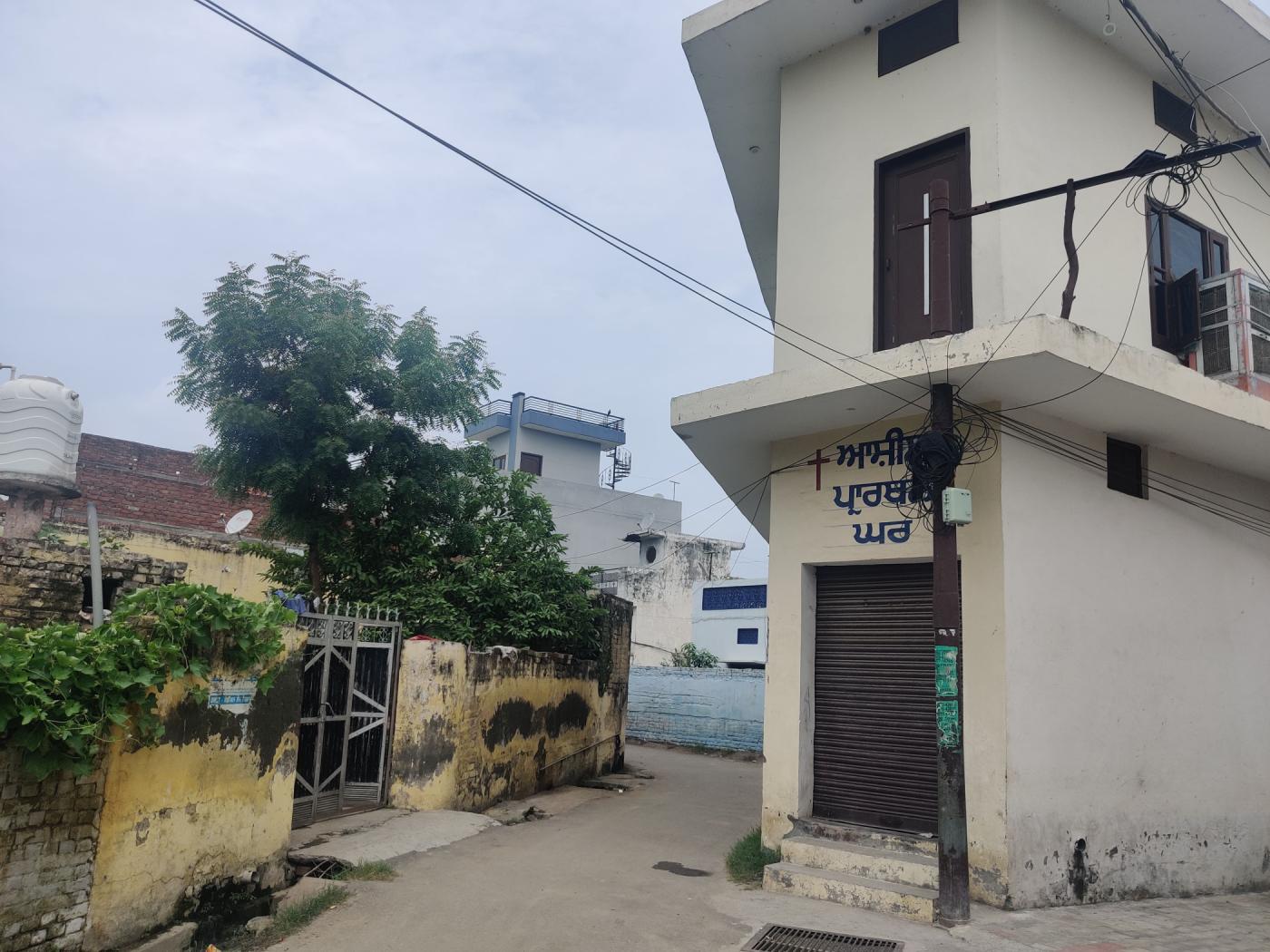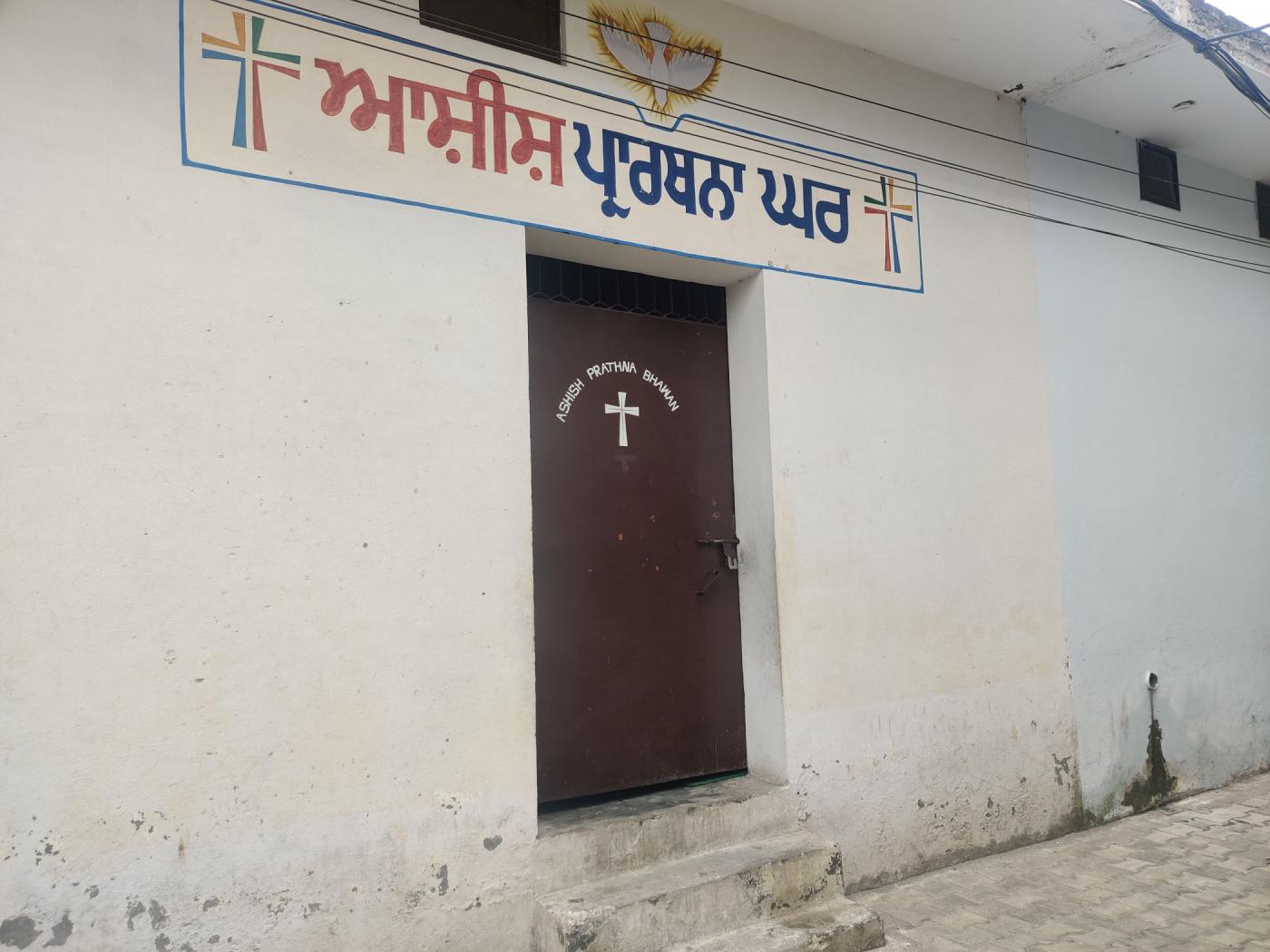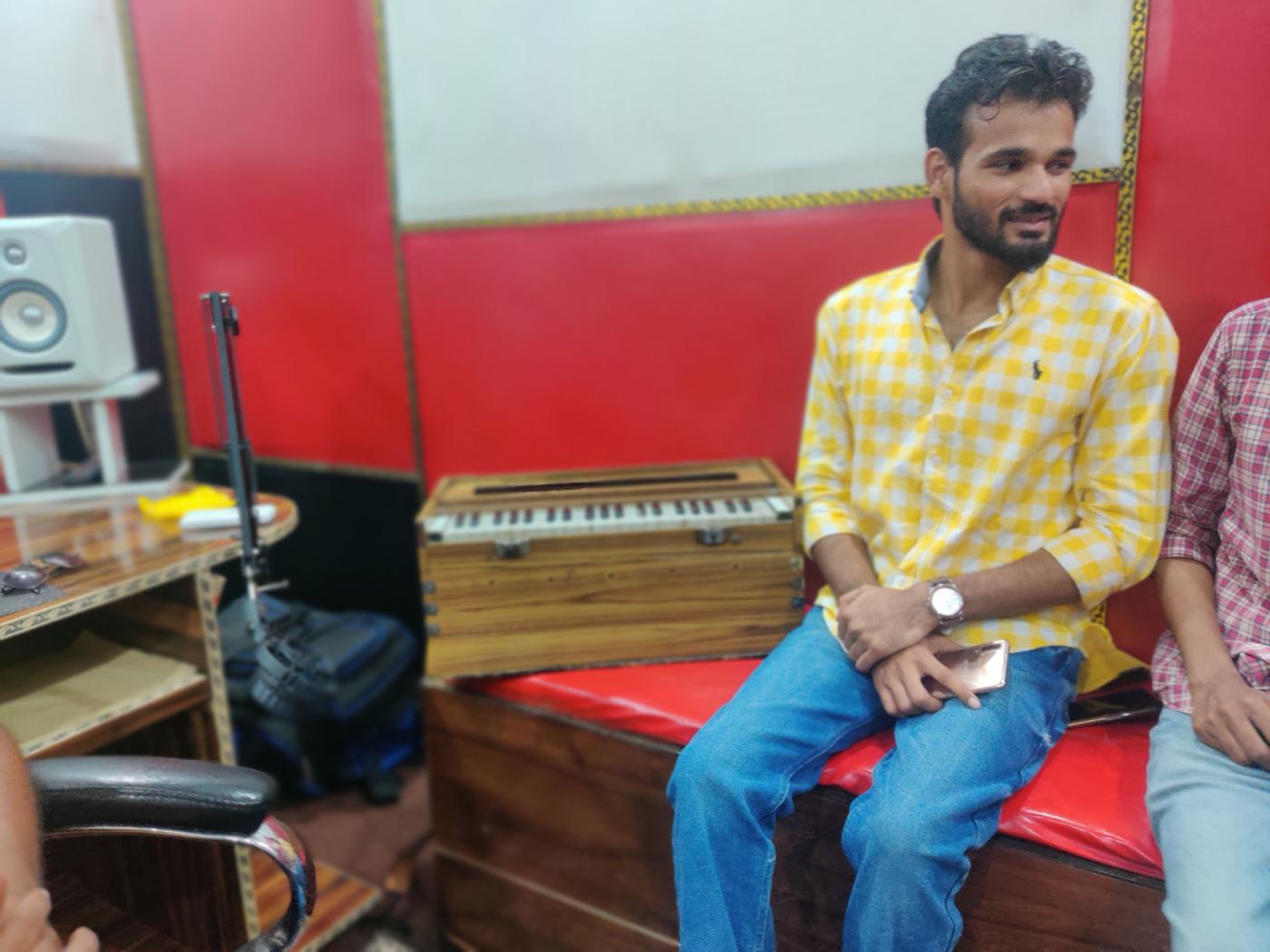Home churches or small prayer halls in homes are attracting thousands of people in Punjab, including Dalit Sikhs who do not formally convert to Christianity though they regularly attend church services. By some estimates, the last three years recorded a 5-10% rise in the number of such churches and pastors. Now, churches in the Majha and Doaba regions are facing violent attacks as anti-Christian rhetoric spreads, fuelled by the insecurities of Sikh groups and demands for a law against religious conversion.

Dhariwal, Jalandhar, Amritsar (Punjab): Down a narrow lane in Dhariwal, lush paddy fields on one side and the town’s only Salvation Army church on the other, stands a white and red bungalow. Six days a week, a wooden cross on the first floor is the only indication that it was a church.
On Sundays, the bungalow in Dhariwal, located 13 km southwest of Gurdaspur in northern Punjab, teems with devotees of Jesus Christ, swooning to pastor Raju Rangila’s tunes. “They come to heal,” he told Article 14.
Past the 7-foot tall gates is a large prayer hall that can comfortably seat 100 people. The walls are bright pink, green carpets cover the cemented floor, a table with a hand-embroidered tablecloth doubles up as the altar, and a pulpit stands beside it. When we visited, the rest of the room was empty. No pews, no organ.
Pastor Rangila is known locally as the god of gospel singing. He also claims to have been among the first to record gospels in Punjabi, almost three decades ago.

On the first floor of their bungalow, in a small studio, Rangila and his sons record religious music and release it on social media. His “home church” is not the only one in the town, nor even the largest. The neighbourhood itself is dotted with dozens of such “independent churches” or “home churches”.
It is such churches that are responsible for the increase in the numbers of Christians in the state, according to George Soni, president of the Punjab Christians United Front. “Tough to put a number on it as we do not have lists of all such churches but I would say there has been a 5-10% increase in the past three years,” he said.
This growing number of churches and churchgoers in Punjab, particularly in the border districts, led to sporadic friction with Sikh religious organisations and violent incidents over the past few years (here and here) that have gathered pace in recent months, alongside accusations that Christian missions were conducting large-scale forced conversions.
The latest in a string of more frequent attacks on churches and pastors took place on 31 August, when masked men vandalised a church in Tarn Taran district, on the border with Pakistan, and set the pastor’s car on fire. Christian groups responded with calls for peace and a plea in the Punjab and Haryana high court seeking adequate security for churches in the state.
A day earlier, the head of the Akal Takht, the highest political institution of Sikhs, Giani Harpreet Singh, condemned alleged forced conversions by Christian groups and demanded a law against such conversions.
Sikh organisations claim that Sikhs are converting to Christianity in droves. Christians make up less than 1.5% of Punjab’s population, according to official data from the 2011 Census of India, while Sikhs are close to 60%, but that has not stopped violence against Christians.
Attacks against Christians in Punjab follow a pattern of accusations and conspiracy theories about demographic changes established in similar attacks in other states—a departure from the trend is that attackers in other states were Hindu right-wing groups.
Article 14 has reported about growing violence against Christians in Andhra Pradesh, Uttar Pradesh, Madhya Pradesh and Karnataka. In UP, cases were filed against pastors for allegedly conducting illegal conversions under the state’s new anti-conversion law, the Uttar Pradesh Prohibition of Unlawful Conversion of Religion Act, 2021, which makes religious conversion a cognisable and non-bailable offence and prescribes a sentence of up to 10 years in jail.
In Dhariwal town, less than 100 km from the border with Pakistan, 18% of the less than 20,000 residents are Christians. Dhariwal, like other border towns in Amritsar and Gurdaspur districts, has one of the highest concentrations of Christians.
Sikh Organisations Insecure About Missionaries
Before the Tarn Taran incident of vandalism and arson, a group of Nihang Sikhs reportedly disrupted an event organised by Christian missionaries at Daduana village in Amritsar district on 28 August.
The Nihangs are an order of Sikh warriors who wear distinct blue robes, decorated turbans with steel quoits and often carry weapons including swords. A first information report (FIR) was filed against Nihang leader Baba Major Singh and 150 unknown aides for the incident.
In May, Christian organisations gathered for a two-day program outside a community hall in Zirakpur of Mohali district. Hindu groups reached the venue to chant Jai Shri Ram and Bharat Mata Ki Jai, according to videos from the event. Amid the commotion, a pastor was allegedly attacked.
In August, five Christian women in Gurdaspur distributing pamphlets with teachings of Christ were accosted by local members of the Shiv Sena and Bajrang Dal, and asked them to chant Jai Shri Ram, said Deepak Masih, a member of a Christian group in Gurdaspur. The women were detained by the police, though no complaint was lodged and they were released after a few hours.
In the meantime, hundreds of Christians flooded the streets of Gurdaspur, chanting “hallelujah”.
The two tense days ended with a meeting of major Christian organisations in Jalandhar on 5 August.
In July, commemorating the martyrdom of an 18th century Sikh warrior, Singh, said religious conversion of Sikhs was a major concern. And he pointed fingers at Christians.
A month earlier, on the remembrance day of Operation Blue Star when the Indian army stormed the Golden Temple in Amritsar in 1984, Singh urged Sikh preachers in rural Punjab to counter the trend of conversion to Christianity.
For close to a year now, the Shiromani Gurudwara Parbandhak Committee (SGPC) has been conducting a dharam prachar lehar (wave of religious preaching) in rural Punjab, specifically targeting the border areas. Teams of pracharaks (sermon givers) spread out and propagate the Sikh faith in each village for a week.
“We are seeing a trend around us,” said Bibi Kiranjot Kaur, a senior member of the SGPC, which is responsible for the management of gurdwaras and has a strong political influence in the state. “My domestic help converted and in my experience, one person converts many others.”
Religious Conversion And India’s Constitution
Article 25 of India’s Constitution guarantees freedom of religion for all citizens, but courts have interpreted such a freedom differently.
In a 1977 judgement in Stanislaus vs State of Madhya Pradesh, the Supreme Court said that Indians have no fundamental right to religious conversion. The court made a distinction between the right to propagate one’s religion or faith and the right to convert. Even though the right to religion is guaranteed by Article 25 of the Constitution, the court said religious conversion does not enjoy such a protection.
Constitutional expert late H M Seervai had argued that the right to propagation is useless without a right to conversion. “Successful propagation of religion” he wrote in Constitutional Law of India, A Critical Commentary, “would result in conversion.”
In several states across the country, laws on religious freedoms have been passed, which legal observers have called anti-conversion laws. While Punjab has no such law, the legal ambiguity around conversion has led to a strengthening of voices against religious conversion.
Religious Fluidity In Place Of Conversions
About 58% of Punjab’s population is Sikh, while 39% is Hindu. Muslims are 1.93% and Christians are only 1.26%, according to 2011 Census data.
Both Christian and Sikh groups agree that these statistics are not representative of reality. “If we make a list of all the members of major churches, we can approximately say that upto 15% of Punjab are Christians,” said Soni.
One reason for this disparity in numbers, according to Emanuel Nahar, chairman of Punjab’s Minority Commission, is that most Dalit Sikhs who go to churches do not formally convert to Christianity.
“Although Sikhism was founded on the principles of castelessness and social equality, the practice of caste is widely prevalent across Punjab,” said Amandeep Sandhu, author of the 2019 book Panjab: Journeys Through Fault Lines.
Dalit and other communities receive government benefits as long as they identify themselves as Hindus, Sikh or Buddhist. Therefore, a person identifying as Dalit Sikh can seek reservations in schools, colleges and government jobs unlike a person who changes his religion to Islam or Christianity.
As government benefits and reservations or affirmative action for India’s scheduled castes are not extended to Christians and Muslims, the Dalit Sikhs who go to church do not make changes to their government identification cards or even formally convert their religion.
Traditionally, Dalit Sikhs were tenants on the lands of the Jat and other dominant, land-owning castes. They were not accorded dignity in the fields, so they felt the need to experience equality at least in places of worship, said Jasdeep Singh, a Chandigarh-based film writer and translator. “Therefore you see separate gurdwaras for Mazhabi Sikhs and Jat Sikhs in the villages even now,” he said.
If there was only one gurdwara in a village, “I remember there were separate langars (community meals) for Jats and Dalits,” said Desraj Kali, a writer and editor who has worked extensively on Dalit issues.
New Faith, Old Religious Affiliations
Over time, Dalit Sikhs including Mazhabis and other oppressed castes, such as Chamars (cobblers or leather workers), Addharmis (followers of Guru Ravidas) and Ramdasia, began frequenting deras, or religious centres that are led by preachers.
“You can think of the church as a dera,” said Paul Sandhu, an advocate at Gurdaspur district court. “Because when people flock to the deras, they only want to place their faith in an institution that can boost their self-esteem. They are not leaving their religions behind.”
Every Sunday, 46-year-old Monty Singh visits the Church of Signs and Wonders in Khambra village of Jalandhar in the heart of Punjab, which claims to be the “biggest and fastest growing” ministry in the region. “My children love to hear the songs, I love to hear the sermons,” he told Article 14. “We make a day out of it.”
Nevertheless, he holds on to his SC certificate. “Even though I am Sikh on paper, I feel Christian at heart,” he said.

Happy Kaur is a 22-year-old student of science in Jalandhar. Eleven people in her family visit a church near their home every Sunday. “We have not missed even one Sunday since 2018,” she said. All eleven of them also retain their caste certificates.
People turn to religion when they feel there is an insurmountable problem, said John Dayal, member of the National Integration Council of India and secretary-general of the All India Christian Council. A cure for terminal health problems, infertility or resolution of immigration worries seemed to be on every churchgoers wishlist, he said.
Happy Kaur, who did not want to reveal her formal name as she feared her caste privileges would come under scrutiny, said her father was the first person in the family to visit a church, eight years ago. “Doctors said he had a weak heart and that he would not survive for more than a year,” she said.
After eight years not only is he alive, but he walks to the church every Sunday. “We saw that and began believing in the mercy of the Lord,” she said. Slowly, the whole family became regular churchgoers.
That is the problem for the SGPC. “Our problem is that they are not fully converting, why ride two boats,” said Kiranjot Kaur. “They need to pick one religion and stick to it.”

Kaur said that Punjab has not healed since 1984, when the Indian Army stormed Amritsar’s Golden Temple. “We are a minority religion in India, who have not received any help to move on from the collective trauma of tanks bulldozing our most sacred shrine,” she said. The Sikhs are, therefore, very aware of the vulnerability that comes with their minority status.
The Green Revolution’s Impact On Demography
The Majha and Doaba regions have emerged as hubs of anti-Christian rhetoric. The Majha region is the border area with Pakistan—mainly Gurdaspur and Amritsar. The Doaba is the region that lies between the Beas and the Satluj rivers, from Jalandhar to Hoshiarpur.
The Doaba region is also known as Punjab’s NRI belt, where large numbers of youth harbour dreams of getting out of the country. There are huge hoardings of visa and immigration services at every street corner. The region is also home to the famous Baba Nihal Singhji Shaheed Gurudwara in Talhan, Jalandhar, also known as the ‘visa gurudwara’.
Fuelling the outward migration is a combination of the economic prosperity and social tensions that the Green Revolution slowly brought about since the 1960s. Dalits and Christians who were farm labourers earlier moved up the economic ladder, said Hamid Masih, head of Punjab Christian Movement.
Outward migration, combined with the fact that Punjab is still an agrarian state, resulted in migration into Punjab from states such as Uttar Pradesh and Bihar. “They became farm labourers,” said Masih, of the new immigrants.
During the 2020 Covid-19 lockdown when workers started returning to their hometowns, 18 lakh people were reported to have registered with the Punjab government to board the ‘Shramik special’ trains to their native states. Of these, nearly 10 lakh wanted to go back to Uttar Pradesh, 6 lakh to Bihar.
Such a large influx of marginalised people from other states also contributes to insecurities around religious conversion, said Kali. “Not too far into the future, we might have a Punjab without Punjabis. And without Sikhs,” said Kiranjot Kaur.
Whenever the majority community is scared, it is fertile ground for political parties to further their agenda, said Kali. “The BJP wanted to enter the fray in Punjab and what better subject could they pick than religious conversion,” he added.
Before the assembly elections in February, BJP leader and Union home minister Amit Shah visited Punjab and said he prayed that religious conversions not take place in the state.
The Aam Aadmi Party (AAP) is a watered down version of the BJP on these matters, according to lawyer Sandhu. Before the election, AAP national convenor and Delhi Chief Minister Arvind Kejriwal also said there should be a law against religious conversions, as long as it is not misused.
Social Media Buzz Unnerves Punjab’s Sikh Majority
According to the website of the church in Khambra, Jalandhar, more than 200,000 people attend weekly services. Its YouTube channel has more than a million subscribers and it has a sizeable number of followers on Instagram and Facebook. Apostle Ankur Narula, the founder, runs a 24-hour TV channel. Narula as well as his followers took the title of ‘apostle’.
On Sunday mornings, the sea of people flocking the church makes it difficult to walk into the premises.
Most people who go to the Khambra church are not Christians on paper, said Kali. “But they create a splash on social media and that makes it feel like their numbers are increasing,” he said. “That makes the right-wing forces very nervous.” Kali was referring to the Sikh majority in Punjab as well as right-wing Hindutva forces.
That is true of other churches as well, including home churches like that of pastor Rangila. “Many people who come here have not been baptised,” said Rangila.
Most of these people also do not have weddings in a church, and they do not follow Christian rituals at the birth or death of family members, said Nahar, the minorities commission chairperson. “They are in the church for a sense of belonging to a community alone,” he said.
Pastor Sarafeen Sabharwal concurred. On the first floor of his house in Dhariwal, he is renovating a prayer hall that will accommodate a hundred people. He started his ministry in Amritsar and moved to Dhariwal a few years ago.
“I would say most people who come to my ministry are not Christians in the formal sense,” said Sabharwal, “But all humans are God’s children and by that logic we are all brothers.”
These nuances are not highlighted on social media. The videos from Khambra and other smaller churches show thousands of people congregating in churches every Sunday. Punjabi gospel songs have millions of likes on YouTube.
In 1996, when Raju Rangila began singing the praise of Christ, the town was not as big, he recalled. There were scattered Christian families among the larger Sikh population. That did not stop him from starting his own ministry in 1998.
Two years later, his son was born, with a tumour in his spine. Shalom Jacob, now 22 years old, was not meant to live for more than a few years, the family said. “Not only was the surgery successful, but the doctors who said I could never walk or talk were proved wrong,” said Jacob.

Jacob composes music along with his father. They work with producers of various music companies across Punjab and some even in Mumbai. A large photo of Rangila standing alongside singers such as Sonu Nigam and Alka Yagnik occupies an entire wall in their home studio above the prayer hall.
Pastor Rangila tells the story of his son’s miraculous recovery to his followers. “My son’s story may or may not influence people,” he said with a smile. “But our music totally does.”
Published in Article14
Published on September 6, 2022
Link: Religious Conversion In Punjab: Not All Churchgoers Are Christian & That Makes Majority Sikhs Nervous | Article-14

